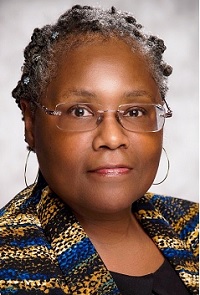Transforming Policy and Practice: Trustworthy AI at Scale in Government
By Jane Doe, AI Trends Contributor

Ensuring AI and machine learning systems are trustworthy while identifying best practices for scaling these technologies were the key themes of recent sessions at the AI World Government live and virtual event held in Alexandria, Va.
Advancing Trustworthy AI: The DOE’s Mission

Pamela Isom, Director of the AI and Technology Office at the Department of Energy (DOE), emphasized the critical need for trustworthy AI to mitigate agency risks. With her extensive experience in applied AI and data science, Isom oversees initiatives that integrate AI to save lives, prevent fraud, and enhance cybersecurity.
According to Isom, the AI project initiatives at the DOE are strategically curated to provide a holistic view on AI and mitigate risks. “My office is there to drive a holistic view on AI and to mitigate risk by bringing us together to address challenges,” she explained.
Isom’s team scrutinizes international, industrial, academic, and inter-agency examples to ensure the AI systems used by the DOE are reliable and trustworthy. “We need algorithms we can trust; we need accuracy. We don’t need biases,” she asserted, stressing the importance of data source integrity.
Example: One of the DOE’s AI initiatives involves applying machine learning algorithms to predict energy consumption patterns, which helps optimize resources and reduce costs. By ensuring the data used is clean and representative, they maintain the trustworthiness of these AI tools.
Guidance from Executive Orders
Isom’s work is guided by Executive Order 14028, which emphasizes cybersecurity for government agencies, and Executive Order 13960, promoting the use of trustworthy AI in the federal government. These orders underpin the principles embedded in the DOE’s AI Risk Management Playbook, which provides comprehensive guidance on ethical AI development and deployment.
The playbook helps identify issues and provides solutions for maintaining accuracy and integrity in AI projects. “The playbook helps you look at these types of problems and what you can do to mitigate risk,” noted Isom.
GSA’s Blueprint for Scaling AI

Anil Chaudhry, Director of Federal AI Implementations at the General Services Administration’s (GSA) AI Center of Excellence (CoE), shared insights on best practices for implementing AI at scale in government. With over 20 years of experience, Chaudhry focuses on modernizing technology to improve public experiences and operational efficiency.
The CoE collaborates with industry experts to solve complex problems without duplicating existing solutions. “Our business model is to partner with industry subject matter experts to solve problems,” Chaudhry explained.
Example: The GSA recently partnered with a leading tech firm to develop an AI system that streamlines administrative tasks across various federal agencies, significantly boosting productivity and reducing costs.
Key AI Scaling Practices
Chaudhry emphasized several best practices for successfully scaling AI projects:
- Evaluate Industry Experience: Ensure that potential industry partners have experience managing large datasets, as federal agencies often deal with petabytes of structured and unstructured data.
- Assess Talent Access: AI projects require skilled professionals. “A best practice in implementing AI is defining how you train your workforce to leverage AI tools, techniques, and practices,” said Chaudhry. Workforce development is crucial for scaling pilot projects.
- Verify Financial Capital: AI projects can face financial volatility. Chaudhry advises ensuring that industry partners have the necessary financial backing to pivot and adapt as projects evolve.
- Secure Logistical Capital: Access to timely and authoritative data is critical. Data-sharing agreements should be in place to ensure the availability of necessary data.
- Plan Physical Infrastructure: Adequate data center capacity is essential when scaling from pilot projects to full implementation. Planning for physical infrastructure needs helps avoid bottlenecks and supports growth.
Conclusion: The Road Ahead
As both the DOE and GSA demonstrate, advancing trustworthy AI and scaling its implementation across government agencies requires a strategic blend of robust policies, ethical considerations, and practical solutions. Through guidelines like the DOE’s AI Risk Management Playbook and the GSA’s best practices, federal agencies can navigate the complexities of AI deployment effectively.
By anchoring AI initiatives in trust and scalability, agencies not only enhance their operations but also contribute to national security and economic vitality. How might your organization leverage these insights to scale trustworthy AI?
